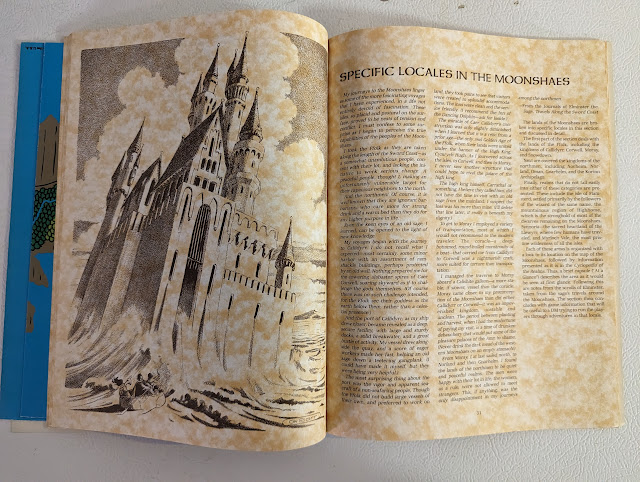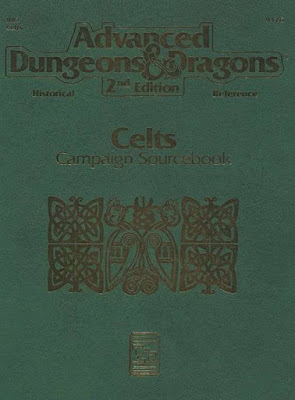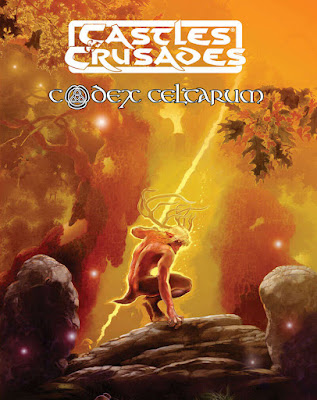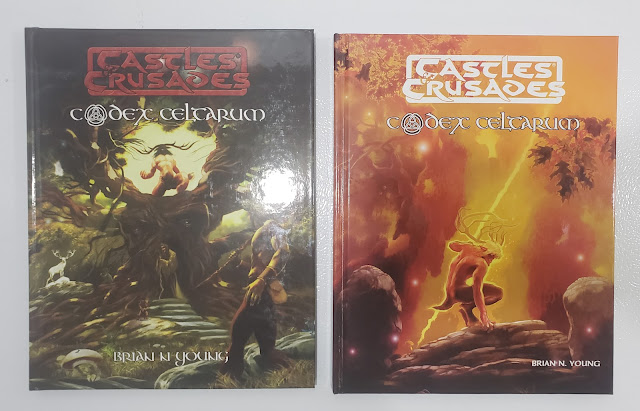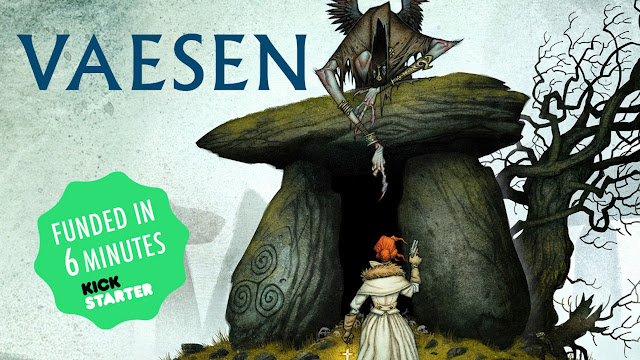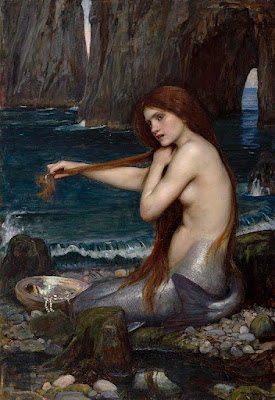"A Bhrigid, scar os mo chionn, do bhrat fionn dom anacal."
Something a little different today, a little bit of Wasted Lands myth-making applied to D&D rather than just using Wasted Lands as a D&D substitute.
One "character" that has been a feature of many of my games (fantasy, horror, sci-fi) is that of Brigid. My version is based on the famous saint, St. Brigid of Kildare AND the goddess Brigid of Celtic myth. I figured with Imbolc (Feb 1) coming up, it is a good time to talk about her.
Who Is Brigit?
A simple question with a very complicated answer. In the mytho-historical tales of Ireland there are two Brigits. The Goddess and the Saint. Was the saint named for the goddess? Was the goddess named for the Saint thanks to a 2000+ plus oral tradition that mostly predates writing? In the years I have paid (casual) attention to the academic debates, I have seen them shift back and forth a little (or a lot, depending on the journal). She is also related to the ancient British Goddess/figure Brigantia, who the Romans saw as aspects of the goddesses Minerva (Athena), Tyche/Fortuna, and Victoria (Nike). She is a complicated Goddess.
This is fascinating but only tangentially related to my games, save for how my readings add to them.
She is a Goddess, a Saint, and a figure in Celtic Pagan Witchcraft. So yeah, I am going to find a place for her in my games. Given her influence on me, I don't think it is a surprise that I have so many redheaded witches.
In my games, Brigit is more of a force than a character. I have talked about her in terms of Celtic Myth. The Witch Guardians for D&D 3.x and 4e. As a historical figure in my modern horror games. And as Protectors of Éire for my Ghosts of Albion games.
In my games where I like to play on the themes of the Rise and Fall of Paganism vs. the Coming of the Christian Faith, Brigit is my chance to "cheat a win." In these games, Brigit is a pagan Goddess. She has a following of women pagan worshipers who are no longer druids but not yet witches. My version of Bodhmal is a great if not prime, example of this. In these games/set-up Brigit tucks her fire-red hair under a nun's habit and continues on. Her witches now hiding in plain sight.
I never worked out how that works for her, but with Wasted Lands I can give it a try! Before there was the St. Brigit of Kildare, or there was Goddess Brigit, there was the woman Brigit. She was many things: warrior, philosopher, healer, and the spirit of her land. Because of her connection to Ireland, she is remembered by many in many different forms.
Brigit (of Kildare / "Cil Dara")
Class: Warrior / Theosophist / Spirit Rider
Level: 15 (5/5/5)
Species: Human
Alignment: Light Good
Background: Animistic
Abilities
Strength: 15 (+1) A
Agility: 12 (+1)
Toughness: 17 (+2)
Intelligence: 11 (+1)
Wits: 16 (+2) N
Persona: 17 (+2) N
Fate Points: 1d12
Defense Value: 5
Vitality: 114
Degeneracy: 0
Corruption: 0
Check Bonus (A/N/D): +7/+4/+3
Melee Bonus: +5 (base) +1 (str) +2 (touchstones)
Ranged Bonus: +5 (base) +1 (touchstone)
Magical Attack: +2
Saves: +2 to all saves (warrior), +2 to Persona saves, but -2 on Magic away from Ireland (Animistic).
Animistic Powers
Mystical senses, Speak with Plants and Animals, Animal Summoning 1 (spell)
Warrior Abilities
Combat Expertise, Improved Defence, Melee Combat, Master of Battle, Supernatural Attacks (melee and ranged), Spell Resistance, Tracking, Masters of Weapons, Extra Attacks (x2), Extra Damage
Theosophist Abilities
See Dead People, Turn Undead, Summon the Dead, Channel the Dead, Protection from Undead (2/day), Command, Death Knell (Banshee Wail), Suggestion (1/day)
Spirit Rider Abilities
Innate Magic (5), Arcane Power (2), Commune with Spirit, Limited Power (outside of Ireland), Magcial Battery, Add Wits bonus to Supernatural attacks
Arcane Powers
Empathy, Precognition
Spells
First level: Gout of Flame, Restore Vitality
Second level: Eternal Flame, Lesser Renewal
Third level: Concusive Blast (Fire)
Heroic/Divine Touchstones
1st Level: First Level Spell: Black Flame
2nd Level: +1 to melee combat
3rd Level: Charm Power
4th Level: Favored Enemy: Undead
5th Level: +1 to all checks, attacks, and saves
6th Level: Immunity to Undead Attacks
7th Level: Character ceases to age
Heroic (Divine) Archetype: Craft, Fire, Warrior
Gear
Sword, Leather Armor
Brigit in the Wasted Lands
For these stats, I played up the aspects of her character that will become important in my games: her connection to fire and her hatred of the undead. This is the warrior aspect of her personality. Her Animitic background (from Wasted Lands) and her levels in Spirit Rider (NIGHT SHIFT) play very well with each other. As long as she is in Ireland (however I choose to define that) she is powerful and can avoid corruption, outside she is less protected.
Brigit in NIGHT SHIFT
From NIGHT SHIFT I get her Theosophist class (Core Rules) and her Spirit Rider class (Night Companion). This works well for me since it also gives me more mechanics to represent her aspects. Brigit is still active in the world of NIGHT SHIFT since she is the head of the Daughters of the Flame coven. A world-wide organization of witches dedicated to Brigit.
Brigit in Thirteen Parsecs
Ah...now this one is fun. How does a Celtic Goddess find her way out into the Solar Frontier? I guess this is my answer to the infamous question, "Why does God need a Starship?" In my Black Star games (soon to be converted wholesale over to Thirteen Parsecs), there is a ship in the Mystic line, the Imbolc Mage NX-3119. This ship is the sister to the Protector NX-3120. I have not talked much about that ship because I have been using it as an NPC ship. I have also been using it as my test-run ship for ship-to-ship combat rules. Brigit herself is not on this ship, but she has a vested interest in it.
You can get the Wasted Lands RPG and the NIGHT SHIFT RPG at Elf Lair Games. Thirteen Parsecs is coming soon.






